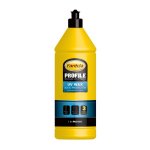lw395
Well-Known Member
Carnauba wax is known to have a high absorption of UV.
A fast and dirty demonstration is to smear some on a reactolite spectacle lens.
But I suspect there is other stuff going on, atmospheric dirt breaking down and reacting with the polyester or simply getting into pores of the gelcoat.
Applying wax in its liquid/paste form also removes a certain amount of dirt.
A fast and dirty demonstration is to smear some on a reactolite spectacle lens.
But I suspect there is other stuff going on, atmospheric dirt breaking down and reacting with the polyester or simply getting into pores of the gelcoat.
Applying wax in its liquid/paste form also removes a certain amount of dirt.

